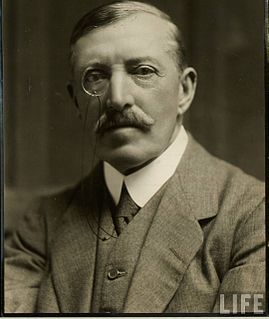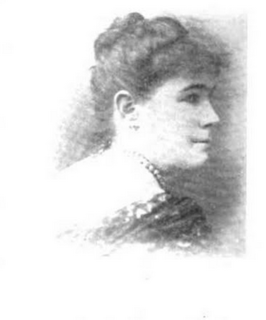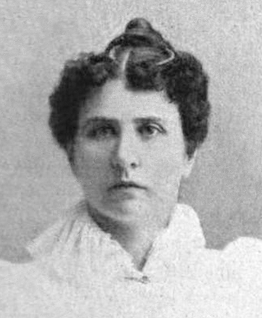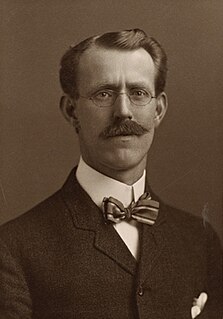 W
WGeorge L. Aiken was a nineteenth-century American playwright and actor who is best known for writing the most popular of the numerous stage adaptations of Harriet Beecher Stowe's Uncle Tom's Cabin.
 W
WCharlotte Mary Brame was an English novelist.
 W
WEdward Zane Carroll Judson Sr., known by his pseudonym Ned Buntline, was an American publisher, journalist, and writer.
 W
WJohn Russell Coryell was a prolific dime novel author. He wrote under the Nicholas Carter and Bertha M. Clay house pseudonyms, and, like many of his fellow dime novelists under many other pseudonyms, including Tyman Currio, Lillian R. Drayton, Julia Edwards, Geraldine Fleming, Margaret Grant, Barbara Howard, Harry Dubois Milman, Milton Quarterly, and Lucy May Russell. Other pseudonyms, like John C. Russell who the "Spike Malone" stories for Munsey's Railroad Man's Magazine from 1909–17, are probable Coryell masks but to this day have not been verified.
 W
WHedwig Courths-Mahler, née Ernestine Friederike Elisabeth Mahler was a German writer of formula fiction romantic novels. She used the pseudonyms Relham, H. Brand, Gonda Haack, Rose Bernd.
 W
WFrederick van Rensselaer Dey was an American dime novelist and pulp fiction writer.
 W
WFrancis Worcester Doughty was an American screenwriter and novelist. Doughty held unorthodox views about the age of humans.
 W
WAugustine Joseph Hickey Duganne (1823–1884) was a Civil War era American poet, journalist, playwright, and dime novelist.
 W
WEdward Sylvester Ellis was an American author who was born in Ohio and died at Cliff Island, Maine.
 W
WMay Agnes Fleming was a Canadian novelist. She was "one of the first Canadians to pursue a highly successful career as a writer of popular fiction."
 W
WCharles Garvice was a prolific British writer of over 150 romance novels, who also used the female pseudonym Caroline Hart. He was a popular author in the UK, the United States and translated around the world. He was ‘the most successful novelist in England’, according to Arnold Bennett in 1910. He published novels selling over seven million copies worldwide by 1914, and since 1913 he was selling 1.75 million books annually, a pace which he maintained at least until his death. Despite his enormous success, he was poorly received by literary critics, and is almost forgotten today.
 W
WWerner Kurt Giesa was a German author. Since 1977 he mostly wrote fantasy novels, the majority of them dime novels for Bastei-Verlag. Until his death Giesa wrote more than 800 novels in various genres such as horror and science fiction. His main work was the supernatural mystery series Professor Zamorra, which he wrote under the pseudonym Robert Lamont.
 W
WThomas Chalmers Harbaugh was an American poet and novelist.
 W
WGuido Henkel is a German-born, American designer, programmer, and developer in the video game industry, as well as a composer and novelist.
 W
WColonel Prentiss Ingraham was a Colonel in the Confederate Army, a mercenary throughout the 1860s, and a fiction writer.
 W
WGeorge Charles Jenks was an English-born American dime novelist. Among others he wrote as part of the Nick Carter stable. He also wrote Diamond Dick stories as W. B. Lawson, and is credited as the creator of the character.
 W
WLaura Jean Libbey, was an American writer.
 W
WCharles Morris was an American journalist, novelist and author of popular historical textbooks.
 W
WGeorge Randall Parrish (1858–1923) was an American lawyer, journalist, and writer, in particular, author of dime novels, including Wolves of the Sea .
 W
WMittie Frances Clarke Point was an American novelist. She wrote 80 dime novels during a 50-year career. In 1978, her home, "The Cedars", was listed on the National Register of Historic Places. Her first novel was Rosamond, but her success began with her 1883 romance, The Bride of the Tomb.
 W
WSt George Henry Rathborne, who also wrote as Harrison Adams and many other names, was an American author of boys' stories and dime novels. He is believed to have produced over 330 volumes of fiction in the course of a 60-year career. He had a proclivity for and skill in producing outdoor adventure stories, and his best works fall within that category.
 W
WOpie Percival Read was an American journalist and humorist. His bibliography lists 60 published books.
 W
WEffie Adelaide Maria Henderson, was a British novelist, better known under the pennames Effie Adelaide Rowlands, E. Maria Albanesi and Madame Albanesi. She was the author of more than 250 romance novels and short-stories for magazines and newspapers.
 W
WEugene Taylor Sawyer was a newspaper editor and author of dime novels, particularly for the Nick Carter series.
 W
WLuis Philip Senarens (1865–1939) was an American dime novel writer specializing in science fiction, once called "the American Jules Verne".
 W
WEmma Augusta Sharkey was a 19th-century American writer, journalist, dime novelist, and story-teller from New York. Known as Mrs. E. Burke Collins in the literary world, she wrote for the press and was one of the small group of women writers of her era who earned more than US$6,000 a year with their writing. As with Sarah Elizabeth Forbush Downs, Sharkey used a married name as a pseudonym.
 W
WLurana W. Sheldon was an American author of novels, poems, and short stories, as well as a newspaper editor. Her published work amounted to over one million words. She claimed to have earned her living in fifteen different and totally dissimilar lines of business, including bookkeeping, business management, journalism, work in a chemical laboratory, buying dry goods, and writing stories. She was a suffrage activist, and she opposed prohibition.
 W
WAnn Sophia Stephens (1810–1886) was an American novelist and magazine editor. She was the author of dime novels and is credited as the progenitor of that genre.
 W
WEdward L. Stratemeyer was an American publisher, writer of children's fiction, and founder of the Stratemeyer Syndicate. He was one of the most prolific writers in the world, producing in excess of 1,300 books himself, selling in excess of 500 million copies. He also created many well-known fictional book series for juveniles, including The Rover Boys, The Bobbsey Twins, Tom Swift, The Hardy Boys, and Nancy Drew series, many of which sold millions of copies and are still in publication today. On Stratemeyer's legacy, Fortune wrote: "As oil had its Rockefeller, literature had its Stratemeyer."
 W
WClara Augusta Jones Trask was a popular 19th-century American writer from New Hampshire, with several hundred titles to her credit. A dime novelist, she wrote in a variety of genres and styles. In the 1895 edition of The Granite Monthly it was said that, "It is doubtful if any woman contributor to current periodicals has received larger returns for her work than has Mrs. Clara Augusta Trask, with the exception of those who own royalties on plays."
 W
WMetta Victoria Fuller Victor, who used the nom de plume Seeley Regester among others, was an American novelist, credited with authoring of one of the first detective novels in the United States. She wrote more than 100 dime novels, pioneering the field.
 W
WOrville James Victor was an American writer and editor in chief.